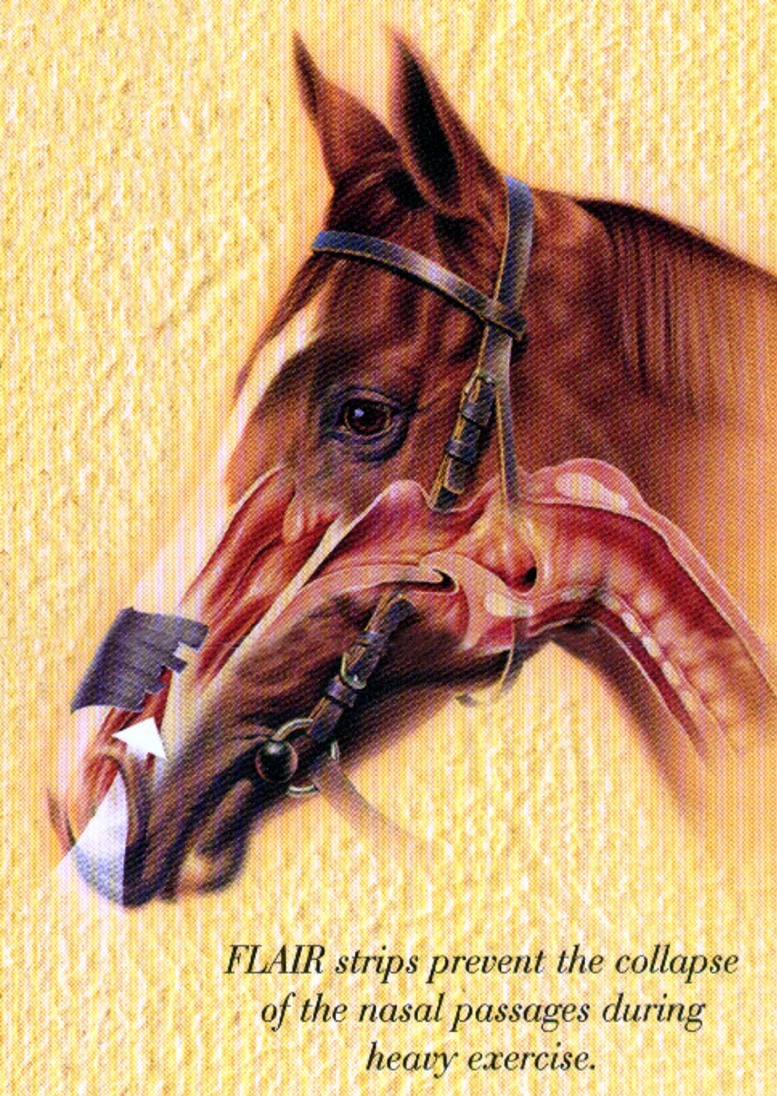How do FLAIR® Equine Nasal Strips work?
Mar 23rd 2023
Uniquely, the horse is an obligate nasal breather. This makes it a challenge to meet the increased oxygen demand required for maximal exercise, which increases in direct proportion to running speed, requiring the movement of approximately two 5-gallon buckets of air into and out of the horse's lungs every second.
The increased demand is further exacerbated when the soft tissues overlying the nasal passages that are not supported by bone and cartilage collapse during exercise. This unsupported area includes the nasal valve which is the narrowest portion of the nasal cavity and is the major contributor to nasal resistance when the nasal passages dynamically collapse during inhalation, reducing the airway diameter and greatly increasing resistance to air flow into the lungs.
During intensive exercise pulmonary resistance doubles. 50-80% of this resistance originates from the nares and associated nasal passages, causing significantly increased work of breathing. Pathological upper airway obstructions including laryngeal hemiplegia, dorsal displacement of the soft palate, and epiglottic entrapment as well as significant poll hyperflexion during ridden exercise results in further collapsing of the nasal passages. These conditions further compromise the ability to move air in and out of the lungs resulting in exercise intolerance or decreased performance, and increased stress on the airways.
Clinical studies have shown that the nasal strip functions to overcome these challenges and significantly impact airway mechanics by providing a spring-like force that not only supports and stabilizes the soft tissues of the nasal passages susceptible to collapse, but also dilates the nasal valve area, which has been verified by endoscopic examination during exercise with the nasal strip in place.
Studies show that inspiratory airway resistance and peak tracheal inspiration pressure are reduced, thereby reducing the amount of energy required for inhalation during exercise, making it easier for horses to breathe and pull air through the nose during exercise. This is evidenced by respiratory muscles using 5-6% less oxygen or energy to bring in the same amount of air with the nasal strip. Horses that have the highest airway resistance also show the largest reduction in inspiratory resistance when wearing the nasal strip.
The nasal strip is a proven non-pharmacological piece of equipment that consistently benefits the respiratory health and function of all horses with no negative side effects.






